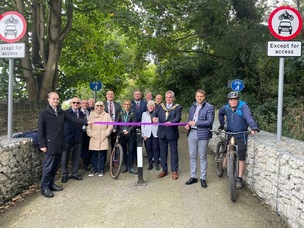UNEXPLODED material lying dormant underneath a giant site earmarked for 1,700 homes is highly unlikely and is not being deemed to be a big risk to its potential development, it was revealed this week.
Codenamed MU1 in Barnsley Council’s local plan development blueprint, it is situated between Pogmoor, Higham and Barugh Green along the M1 corridor and subject of a planning application lodged by Strata Homes and Sterling Capitol, who make up the Barnsley West Consortium (BWC).
Having a number of coal seams, it was home to opencast sites named Craven I, Craven II, Hunters Cottage and Farm House Lane - all of which were backfilled.
However, claims made by former mine manager Edward Raven, 95, that gelignite ‘pills’ remain under the surface appear to have been quashed by the BWC and Coal Authority, whose respective site probes and records show no evidence of the material being present at Craven II, a particular mine of interest given its positioning on MU1.
A spokesperson from the BWC said: “We have considered this further and would like to outline a number of key points which hopefully set out that we are working carefully to bring forward the development safely and that all matters are being considered.
“The Coal Authority are the most appropriate body to comment on such matters, as they are experts in the field of mining, therefore we will also forward Mr Raven’s correspondence to them.
“We would like to thank Mr Raven and believe he may have some useful information which we could utilise to help plan future phases of investigation.
“It is worth noting that a scheme of this scale will require further intrusive investigation over a period of years as the scheme hopefully comes to fruition.
“Whilst anecdotal information and memories can be very useful when scoping out ground investigations, we must also be mindful of factual data held buy public bodies such as the Coal Authority, South Yorkshire Mining Advisory Service (SYMAS) and Barnsley Council, as well as the site-specific results uncovered by intrusive investigations.
“It appears Mr Raven is not saying gelignite explosives are present, just that they may be.
“Based on his memories, it would appear as though gelignite was used at Craven II, although the Coal Authority has no record of this.
“However, what is in doubt is whether it was disposed of inappropriately during the restoration.
“Gelignite is one of the cheapest forms of explosives, it burns slowly and cannot explode without a detonator, with the purpose being that it could be stored safely.
“Unless operators disposed of the explosives with the detonators attached - which we believe is highly unlikely and somewhat reckless - then it shouldn’t matter if they are present or not.
“The depth of backfill beneath Craven II is expected to be 40 metres-plus and one would assume that any disposed-of explosives - if indeed this had occurred - would have been done so prior to backfilling.
“It seems odds that the Coal Authority have no record of explosives being used at Craven II.”
As well as the housing aspect, 39 hectares of employment land is included in the planning application, which is yet to go before the council’s planning board despite being submitted in September 2021.
According to the board, an extended target decision date was amended, but lapsed last week.
Head of planning Joe Jenkinson added: “We are not taking the concerns of Mr Raven lightly, or disregarding the information.
“However, when working with the factual information to date - coupled with a detailed understanding of our development proposals - we feel that the risk in these areas, particularly where the Coal Authority have not highlighted matters of this nature, can only be considered.”




























